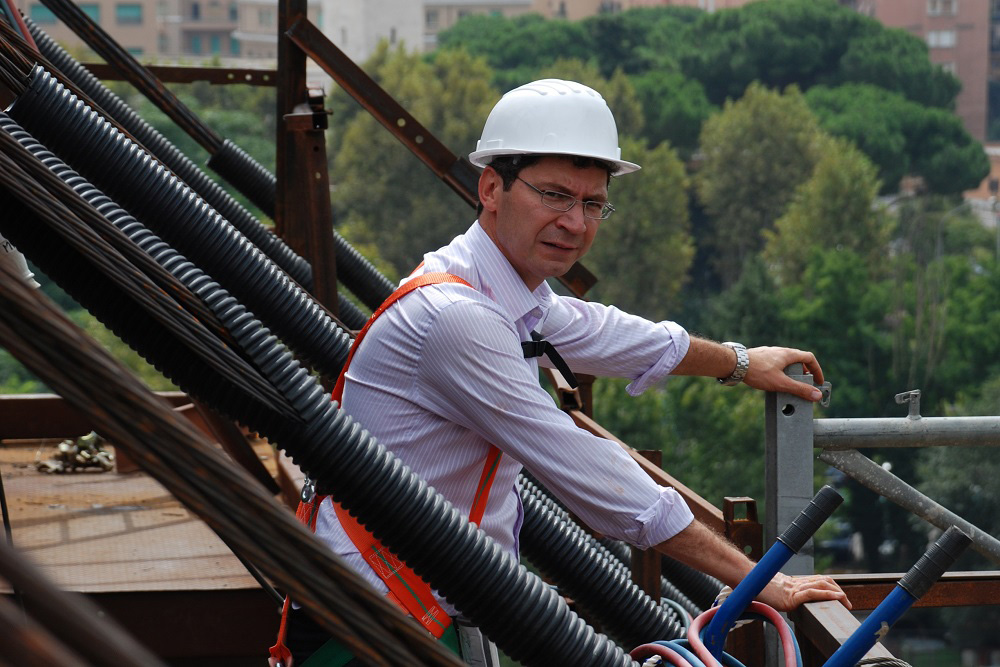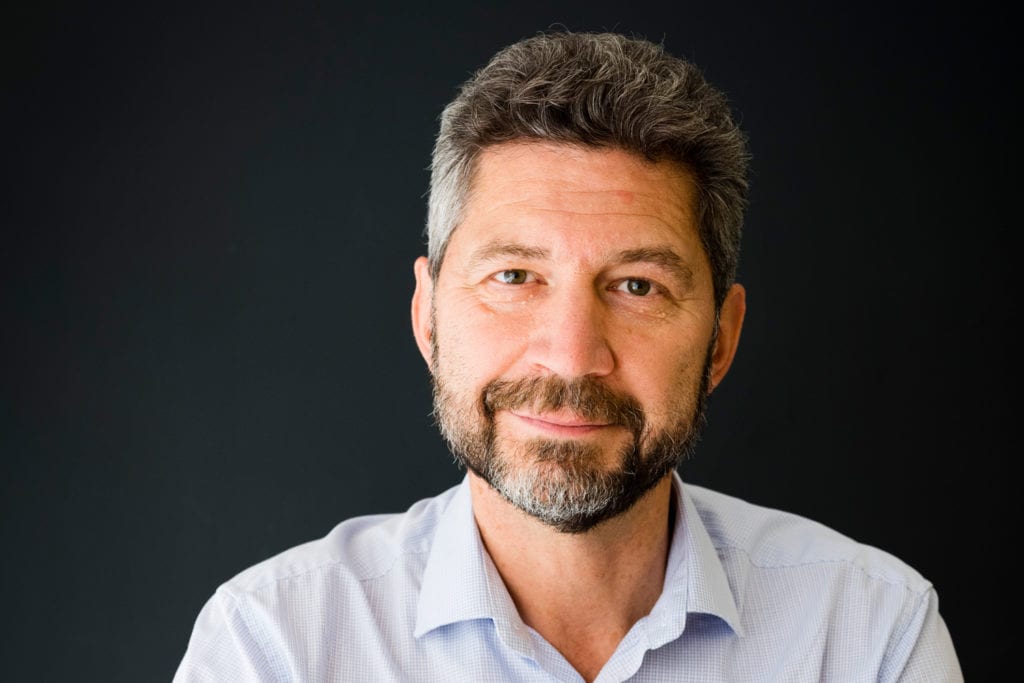Interview with bridge engineer Davood Liaghat
In our latest blog series we interview a range of specialist consultants from across the practice.
Here we speak to bridge engineering expert Davood Liaghat.

What’s your role in the bridge team?
I’m the director and I lead the team. It’s a fair-sized team that has built up over the years. There was no bridge group at Buro Happold when I joined — 2019 is our twentieth anniversary.
What makes a good bridge?
A bridge’s structure is all apparent. We don’t generally clad it. You can see how a well-designed and executed bridge works in terms of the flow of forces, how the loads are taken down to the foundations and the best engineering judgement, which means making it slender. A good bridge is one that shows you what it is, so it’s about that beautiful structure.
So what makes a bad bridge?
Poor design. Have you ever been on the M25 going towards Gatwick Airport? There’s a pedestrian bridge, lots of cables. A very clunky mast, necessarily huge structure. The proportions don’t seem right.
Are there recurring challenges for bridge projects?
Bridges tend not to generate income. It’s usually more about providing social need and functionality than financial gain. So the challenge is to give every client that comes to us the most efficient, cost-effective bridge that we can deliver.
Bridges seem to be quite quick to construct. Is that because there aren’t loads of different disciplines involved?
That’s one of the things I absolutely love about bridges! Of course, we use other disciplines as and when we need it, such as support from our ground engineers and lighting experts. Yes, we work as a team — don’t get me wrong, I love working as a team — but the structure, as I explained, is very much what it is.

Do you subscribe to the romantic idea that bridges bring people together?
Absolutely. We did a bridge over the River Tiber in Rome — the Ponte della Musica — which I started in 2000. For various reasons, it took 12 years to do. I developed a great passion for it. Who wouldn’t? It was one of the first bridges over the Tiber for a long, long time. Enthusiasts and friends who go there send us photographs of it being used for concerts and fashion shows. People do yoga on it. Some bridges need to become a place of their own.
Which projects have you found especially rewarding lately?
We’ve recently completed a major piece of infrastructure in Sunderland. That bridge is called the Northern Spire, which crosses the Wear. Last year that was the third biggest bridge being built in the UK. Another great project of ours is a moveable bridge across Copenhagen harbour, known as the Lille Langebro, which has just opened to the public. That one is so popular. In July, people were diving off it to get cool. It’s got a sloping side so the kids slide down it and jump into the water. Wonderful.
I’ve heard something about the “total podium offer” that you’re developing…
Let me explain. “Podium” is a generic term for the platform leading to and surrounding a venue or a development where the building has to overcome some obstruction, whether it’s a road, railway or tunnel. These days, because of lack of space, there’s a lot of pressure to build over those existing assets. To accomplish that, a lot of coordination and technical analysis has to be done. Podiums are places where you get people and traffic going – a perfect example is the Emirates Stadium in north London – so around it you need to have roads and platforms to get people in and out safely. They’re complex structures.
Where does Buro Happold come in?
That kind of project requires many disciplines — not just for the structure, it’s also about things like crowd flow, safety, security, utilities and drainage. If you’re the owner of a venue you have the headache of sourcing and managing each of those specialities. We’ve got the experience to bring that package together and run it for the client.
What interests you about where the bridges specialism is heading?
There are challenges in terms of technology, new materials and delivering efficiently. The future has to be about enabling these three matters to improve. Take the first point of how we can improve our computational work. Software has made the analytical process faster. We’ve got quite a lot of these tools but they don’t necessarily talk to each other. They need to be talking to each other more efficiently.
What is the advantage of that?
Improving communication using a common data format means that we can automate model creation, which saves time and cuts human error. We’re doing code work to facilitate these processes, so something that would have taken two weeks can now be done in a couple of days. That allows us to devote more time to the creative side of our work while improving accuracy and safety. I must emphasise that, because when you mention it to clients they say, “Great, I can pay you less and you can do it in half the time.” It’s not always about getting everything done faster, of course.
What’s the next big project on the horizon for the bridge team?
We’re doing a major bridge over the Danube in Budapest. That’s estimated at 180 million euros, which is a different scale of project for us. I’m looking forward to that. Hopefully, it won’t take 12 years like the one in Rome.


